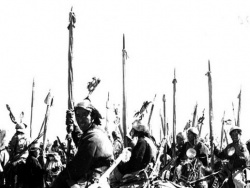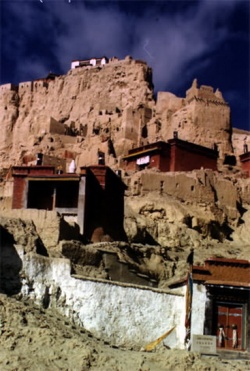Tubo Dynasty
History and legend says that the first king of Tibet was a former celestial god. Due to his demur looks and refined manner, locals carried him back to Tibet and respected him as king to rule their race. This was the first king of Tibet, Nyatri Zampo, also known as the Jianyu King, or king on the shoulders. Some Tibetan historical records such as Record of Tibetan Kings, Red Annals, and A Feast for Wise Men noted the legend that Nyatri Zambo came to Tibet and was met by 12 local priests. During that time there were many small states in Tibet, but no leader was able to control them. Over 900 years, from the first king of nyatri Zampo to the Songzan Gambo, who unified Tibet, there were 33 kings in Tibetan history. At that time, there were numerous tribes in Tibet, but only the Bo tribe, there were numerous tribes in Tibet, but only the Bo tribe, led by the descendants of Nyatri Zambo, gradually developed into a powerful tribe with a slavery system by the 7th century when Songzan Gambo ascended the throne. The period is important in the social development of Tibet. In politics, the slavery system was consolidated and the Tibetan plateau was unified. In economics, advanced technology in agriculture and handicraft of the Hans and other nationalities was introduced into Tibet. As a result production was greatly improved. In culture, the founding of Tibetan characters and the introduction of Buddhism brought about an impressive influence on later Tibetan society.
Before the unification of Tibet, all tribes had their own leaders with independent power. After Tibet was unified by Songzan Gambo, he gathered all tribe leaders at Losha, now Lhasa, to define their posts, related responsibilities and duties. All the leaders of different tribes were ordered to pledge loyalty to Tubo royal court, pay tax and offer labor to the royal court. If there was an external war, they were to offer armed forces to fight. Internal disputes between tribes were solved by the court.
Both Tibetan and Han records from the Tubo Dynasty detailed slavery. Zambo kings bestowed ministers with slaves and after the death of Zambo and officials, slaves were buried alive as a funerary object. During religious ceremonies slaves were killed as celebration. Others were forced into hard labor.
This showed that in the Tubo Dynasty Tibet practiced slavery.
In 869, an unprecedented uprising by slaves broke out, which lasted nine years and forced the eventual collapse of the Tubo royal court. Tibet fell into a turbulent and divisive period which lasted until the middle of the 13th century when, with help from central government of the Yuan Dynasty, the Sakya Regime restored order.
From the early 10th to the middle 13th centuries, Tibet basically finished its transition from slavery to feudalism. In the 700-odd years from middle 13th century to 1959, that feudal system was practiced in Tibet.

